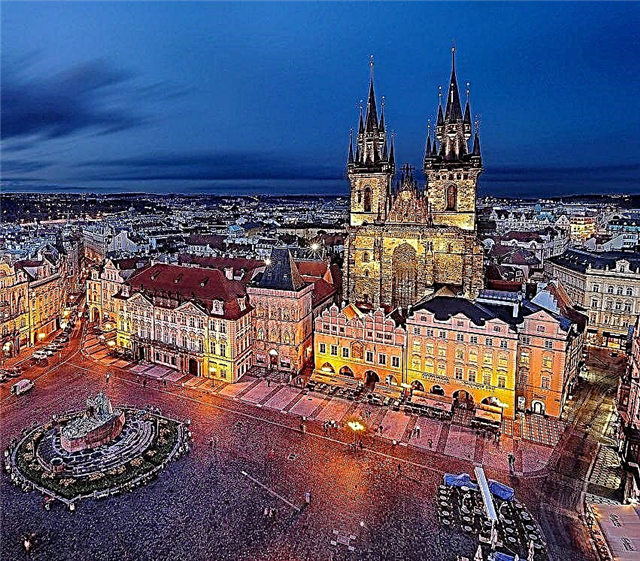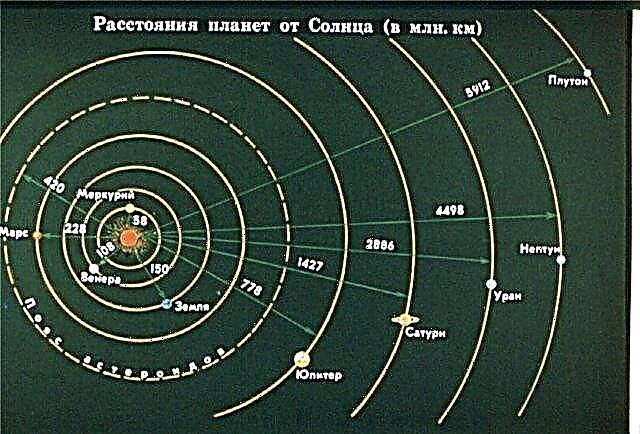Born by the breath of blazing fire and shackled by age-old ice power in northeastern Tanzania, breaking through the clouds, rises the Kilimanjaro volcano - the highest detached mountain in Africa - a symbol of beauty and unexplored wonders.
The Swahili people, who once lived in the endless green spaces of Africa, never knew about the existence of snow, so they considered the snow-white cap that framing the top of the mountain to be pure silver, shimmering under the rays of the equatorial sun. The myth melted in the palms of the brave leader, who decided to climb Kilimanjaro to explore the slope of the summit. The natives, faced with the icy breath of the volcano's silvery ice, began to call it the "Abode of the God of Cold."
Volcano Kilimanjaro - the highest mountain in Africa
The mountain is so majestic that with its 5895 m in height it occupies a leading position in the entire African continent. You can find the volcano on the map by the following geographical coordinates:
- South latitude - 3 ° 4 ’32 ″ (3 ° 4’ 54).
- East longitude - 37 ° 21 ’11 ″ (37 ° 21’ 19).

The African mountain (also called the volcano), due to volcanic activity, has the characteristic outlines of gentle slopes rushing to a huge summit, consisting of three different volcanoes, united into one whole:
The history of Kilimanjaro volcano
To learn the history of the origin of the Kilimanjaro volcano and the origins of its development by man, you need to go deep into the centuries when the African tectonic plate cracked. A hot liquid rose from under the earth's crust and gushed through the crack. A mountain formed in the middle of the plain, from the top of which lava erupted. The diameter of the volcano began to increase due to the rapid cooling of the fiery stream, over the solid shell of which new streams flowed. After many years, the slopes of Kilimanjaro were covered with vegetation and acquired various species of animals, and later people settled nearby.
Thanks to the artifacts found, the period of residence of the Huachagga population, which settled in the "heart" of Africa about 400 years ago, is traced. And some household items are even 2000 years old.
According to legend, the first who was able to cope with the climate and peculiarities of the Kilimanjaro volcano was the son of the Queen of Sheba, Tsar Menelik I, who wished to depart to another world with all the honors at the very top of the mountain. Later, one of the direct heirs of the king returned to the top in search of treasures, including the legendary ring of Solomon, which gives the keeper great wisdom.
There was once an unprecedented debate among historians of Europe not only about the presence of snow at the top, but also about the existence of the volcano itself. Missionary Charles New was the first to officially document his ascent in 1871 to an altitude of about 4000 m. And the conquest of the highest point of Africa (5895 m) took place in 1889 by Ludwig Purtsheller and Hans Meyer, as a result of which climbing routes were laid. However, before the ascent, there were earlier mentions of the snow-covered mountain on the Ptolemy's map, dating back to the II century AD, and the date of the discovery of the volcano is officially 1848 thanks to the German pastor Johannes Rebman.
Active or extinct
Many are interested in the question: is the Kilimanjaro volcano active or dormant? After all, some crevices from time to time release accumulations of gases outside. Experts, answering the question whether an eruption is possible, say: "Even a small collapse can affect the awakening of the volcano, as a result of which the rocks will weaken."
In 2003, scientists came to the conclusion that the molten mass is at a depth of 400 m from the surface of Kibo. In addition, the anomaly associated with the rapid melting of ice attracts considerable attention. The snow cover is decreasing, so soon experts assume the complete disappearance of snow on the top of Kilimanjaro. In 2005, for the first time, the top of the mountain was freed from the snow-white cover due to the catastrophically small amount of snowfall.
We advise you to look at the Vesuvius volcano.
It is impossible to find out how many times the volcano has erupted, but according to the description of the geologist Hans Mayer, who saw an entirely ice-filled crater, there is no volcanic activity.
Flora and fauna
The climate surrounding volcano Kilimanjaro is unique: tropical heat and the kingdom of icy winds are separated from each other by only a few thousand meters. When climbing the mountain, the traveler overcomes different climatic zones with an individual climate and vegetation.
Bushland - 800-1800 m... The foot of the Kilimanjaro volcano surrounds an area with grassy vegetation, occasionally scattered trees and bushes. The air masses are divided into seasons: in winter - tropical, in summer - equatorial. On average, the temperature does not exceed 32 ° C. Due to the location of the volcano near the equator, much more precipitation is observed than in more distant places of the subequatorial climatic zone. The main occupation of the local population is agriculture. People grow beans, peanuts, corn, coffee, rice. Sugar plantations can be found at the foot of the mountain. Among the animals in this climatic zone are monkeys, honey badgers, servals and leopards. This cultivated area with a network of irrigation canals is the most densely populated area of Kilimanjaro. Local residents do not spare natural resources, mercilessly cutting down vegetation for domestic needs.
Rain forest - 1800-2800 m... Due to the considerable amount of precipitation (2000 mm), a varied flora is observed at this height level, even rare species can be found here. A characteristic feature of the belt is a sharp drop in air temperature at night, but most often it is warm in this zone throughout the year.
Heather meadows - 2800-4000 m... At this altitude, the slopes of Kilimanjaro are shrouded in dense fog, so the plants are saturated with moisture, which allows them to grow in such a dry climate. There are plantations of eucalyptus, cypresses, and local residents climb the slope to grow vegetables in shady areas. Tourists have the opportunity to look at the fields where the Lanurian lobelia grows, reaching a height of 10 m. There is also a wild rose, but not ordinary, but gigantic. To better understand the scale and beauty of the mighty forest, it is worth looking at photos of tourists. The oxygenated porous soil allows a large number of crops to grow.
Alpine wasteland - 4000-5000 m... Zone of high temperature difference. During the day, the air warms up to 35 ° C, and at night the mark can drop below 0 ° C. The scarcity of vegetation is affected by a small amount of precipitation. At this altitude, climbers feel a drop in atmospheric pressure and a sharp drop in air temperature. In such conditions, it can be difficult to breathe deeply.
Arctic zone - 5000-5895 m... This belt is covered with a layer of thick ice and rocky ground. The flora and fauna at the top is completely absent. The air temperature drops to -9 ° C.
Interesting Facts
- To climb the top of Kibo, no special mountaineering training is required, good physical shape is enough. The slopes of the volcano are among the seven peaks that climbers and tourists love to conquer. The ascent to Kilimanjaro is considered easy, but only 40% of those wishing to conquer the top reach the final goal.
- Everyone knows on which continent a potentially active volcano is located, but few people know that it is located on the border of two countries - Tanzania and Kenya.
- In 2009, as part of a charity event, 8 sightless climbers ascended the summit. And in 2003 and 2007, the traveler Bernard Gusen conquered the mountain in a wheelchair.
- Every year 10 people are killed on the slopes of the mountain.
- In humid conditions, when fog surrounds the base of the mountain, there is a sensation of soaring, as if Kilimanjaro is a weightless peak, towering over the endless green plains.
- The area occupied by the volcano is capable of containing air masses coming from the Indian Ocean.
- The "Sparkling Mountain" is so great that if the icy summit ceases to generate rivers and streams, the meadows will dry up, the dense forests will perish. Locals will leave their homes and leave, leaving behind a desert in which even animals cannot exist.









